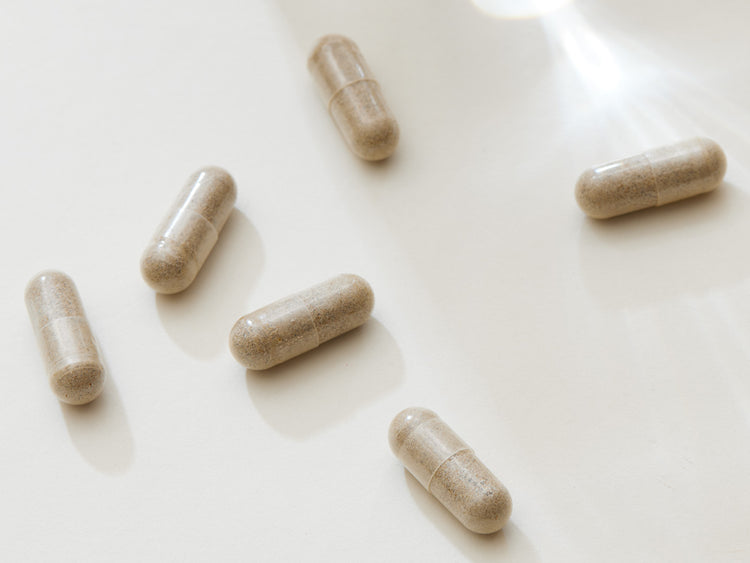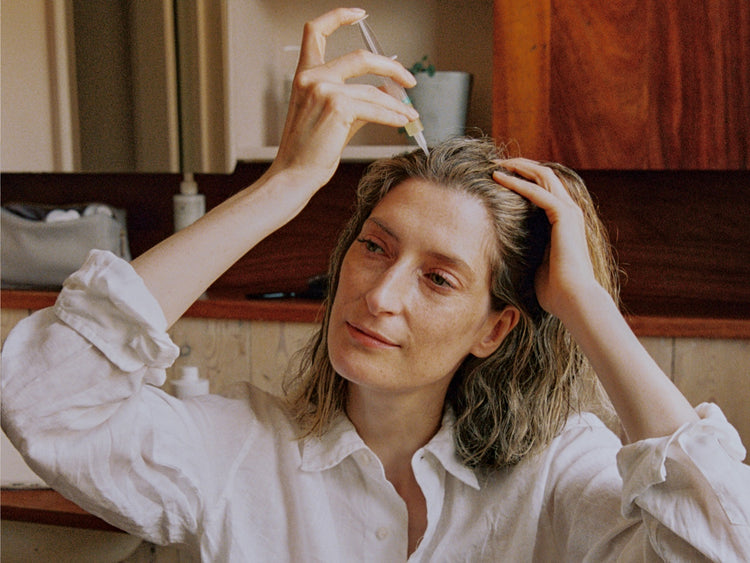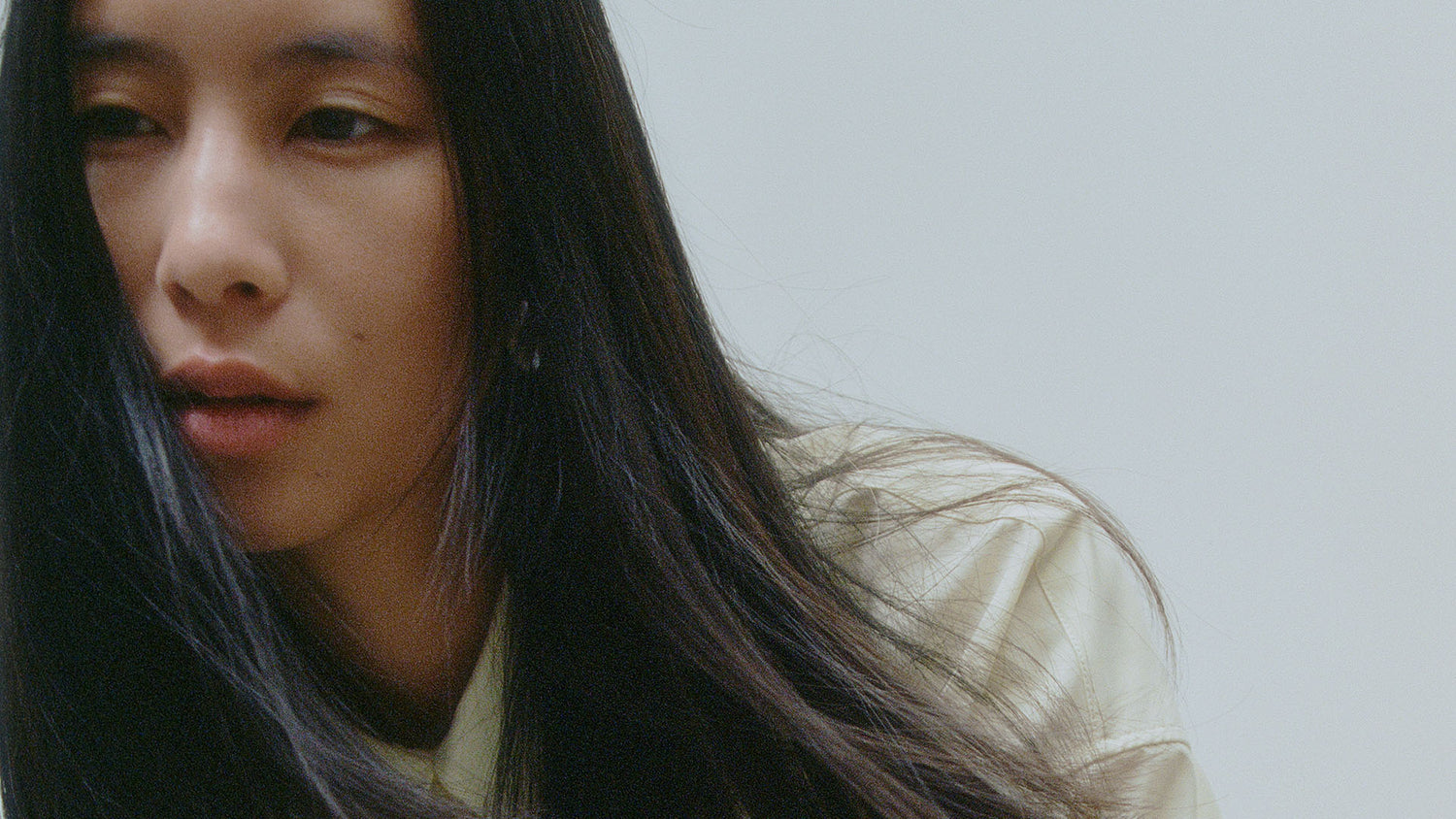From frayed ends to excessive breakage, many telltale signs of damaged hair are easily identified, but what about the reverse? Healthy hair is determined by characteristics including hair tensile strength, its ability to grow long, lustre and more. With the expertise of Hårklinikken Hair Specialists, we’ve compiled the ultimate guide to determining exactly what healthy hair is.
The anatomy of a healthy hair strand:
Medulla: The medulla is the innermost layer of the hair but is mainly present in thicker hair types. This part of a strand has no bearing on your hair health.
Cortex: This is the middle layer of a strand, and gives your hair its colour, texture, and strength. A healthy cortex has a strong protein structure and is resistant to breakage. Fragile hair strands that appear dull and uneven could indicate that your cortex is damaged.
Cuticle: This is the outer layer of the hair that protects the cortex. Made of overlapping scales, a strong, healthy cuticle is smooth and tightly packed, providing a barrier against external stressors like heat, pulling, and harsh chemicals. You’ll know your hair cuticles are unhealthy if your strands feel increasingly rough, frayed, tangle-prone and dry.
What makes a hair follicle healthy?
The hair follicle – a tube-like pore from which hair grows – is attached to a sebaceous gland, an arrector pili muscle, and tiny blood vessels known as capillaries. A healthy hair follicle will have rich blood flow (meaning it gets all the nutrients and oxygen it needs) and a strong hair shaft firmly rooted in its base. A healthy hair follicle is also one that hasn’t shrunk (due to miniaturisation) and is at its optimal size.
What makes a hair root healthy?
Hair growth begins at the root of the strand. Located inside the follicle and ideally growing deep into the scalp, your roots require adequate blood supply and nutrients to produce strong, healthy hair strands. Thinning hair often sits closer to the scalp’s surface, but you don’t necessarily need deep roots to be able to grow healthy strands.
What does a healthy version of the hair growth cycle look like?
Think of this as the lifecycle of a hair strand. Everybody’s hair growth cycle is different and factors such as age, genetics, and overall health can affect the duration of each phase. But here’s an overview of what typically occurs at each stage:
Anagen / Growth Phase
Duration: about three to seven years
During anagen phase, the hair follicle actively produces hair cells. It can last anywhere from three to seven years.
Catagen / Transition Phase
Duration: about one to two weeks
Throughout the catagen phase, hair follicles regress and detach from the dermal papilla in the hair follicle – but remains in place. Only around 5% of your hair is in this stage at any given time.
Telogen / Resting Phase
Duration: about three to four months
This stage is when new hairs begin forming in the follicles that are shedding old strands. Approximately 5% to 10% of the hairs on your head are in this stage at the same time. When more than 10 % of your hair follicles enter the telogen phase simultaneously, it can possibly lead to a condition called telogen effluvium, which manifests as excessive hair shedding.
How fast does healthy hair grow?
This varies from person to person, but on average hair grows about .2in to .7in (about .5cm to 1.8cm) each month, however the average is closer to .4in or 1cm. The hair miniaturisation process results in hair becoming thinner and finer, causing your hair to grow slower and slower over time.
Five signs of healthy hair:
- Shiny and lustrous
- Elastic, flexible strands
- Even hair pattern and texture
- Minimal split ends and breakage
- Ability to grow long
But, there can be false signs of healthy hair.
In some cases, shiny and smooth hair can be achieved through less-than-ideal processes. Products incorporating silicones can create shine but leave hair coated in the problematic ingredient, ultimately locking out essential moisture. Various dyes and chemical treatments can also create the illusion of healthy strands – appearances can be deceiving.
The frizz myth.
While it’s often associated with damage, frizz isn’t always a negative hair characteristic to avoid. Healthy hair can have some frizz, which is often exacerbated by humidity. Hot styling tools can smooth frizz, but excessive use (and not using heat protectant) can cause damage to your strands. Hair that’s miniaturising often becomes frizzier over time as it lacks hydration.
Seven tips for healthier hair:
We always take a scalp-first approach for stronger new hair and simultaneously caring for existing strands. The goal is to create and maintain a balanced, healthy scalp microbiome for optimal hair growth while hydrating and protecting the lengths.
1. Cleanse frequently, properly and with the right products.
Washing your hair seems like an extraordinarily simple ritual, but there are so many myths and theories out there that it can become complicated. With more than 30 years of experience, we know that frequent, thorough cleansing with the right type of shampoo is crucial for a healthy, balanced scalp microbiome. You can read our guide to shampooing here.
2. Maintain a balanced diet.
Just like the rest of your body, your scalp needs proper nutrition to function at its best. That means drinking plenty of water (your hair needs hydration from the inside, not just the outside) and eating unprocessed, nutrient-dense foods that provide a full spectrum of vitamins, minerals, antioxidants, and healthy fats.
3. Reduce stress
Perhaps easier said than done, but reducing stress does wonders for your overall health and wellbeing – and that includes your scalp and hair health. Whether your version of self-care is to read, paint, cook, meditate, stretch, walk, swim, practice yoga, soak in the tub, or do breathing exercises, it’s crucial to take time for yourself.
4. Hydrate strands.
All hair types need conditioning, just in varying intensities. People whose hair is curly, coily, kinky or damaged will need more moisture, but people with straight hair should keep in mind that hydrated hair is more fortified and flexible – therefore less prone to breakage and split ends. You can read our guide to conditioning here.
5. Limit heat styling.
We advocate for heat-free styling whenever possible but understand that sometimes blow-dryers and other types of hot tools are hard to resist when going for a specific look. Our tips are to use hot tools as little as possible, but when incorporating them into your routine, be sure to use a heat protectant and lower the heat setting. You can read our guide to hot styling tools here.
6. Get regular cuts and trims
We all know that hair grows from the root, so a cut won’t make it grow faster but it can be a key to having your strands grow longer and healthier. Regular trims make your hair appear healthier and fuller by removing damaged ends and ensuring that splits don’t travel further up the strands.
7. Don’t use masks and conditioners with silicones.
Many hydrating products on the market contain silicones, which make hair look silky and shiny, but they actually coat hair strands which can lock real moisture out. Ultimately your hair might look great in the short-term but will be lacking health and natural lustre.

Concerned about the health of your hair?
Determining the condition of your scalp and hair health is simple with an expert assessment. Book a virtual or in-clinic consultation with a Hårklinikken Hair Specialist and take the first step to getting the hair you want.





